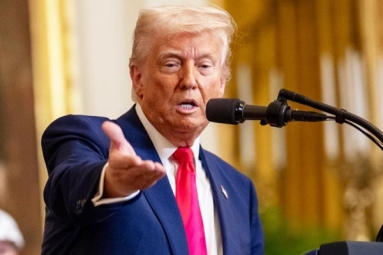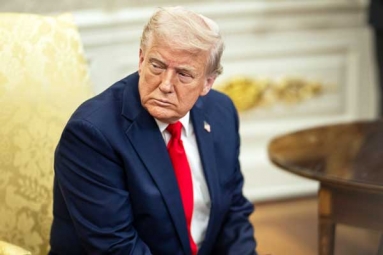Lok Sabha Election Results 2019: From Counting of Votes to Reliability of Exit Polls Everything You Need to Know About Vote Counting Day
May 22, 2019 06:47
(Image source from: DNA India)
In few hours the fate of Indian politicians who vied in recently concluded Lok Sabha elections will be decided as the most critical and tedious process ‘counting of votes’ is scheduled for May 23.
The Election Commission of India has been under intense criticism over transparency in counting of votes. As an ardent voter, it is quite logical being curious about the process of counting votes. Nevertheless, we are here with everything you wish to know about vote counting day.
When Are the Results?
The official outcome will be revealed on Thursday, May 23, after a tedious process of counting ballots.
The announcement of results this time is expected to be delayed with Voter-Verified Paper Audit Trail (VVPAT) counting to be introduced in this Lok Sabha election.
According to the Election Commission, it takes around 1 hour to count slips for one polling station.
There are 10.35 lakh polling stations all over the country with an average of 250 per constituency, with certain constituencies having as many as 400 polling stations.
Who Will Count the Votes?
The Election Commission will be appointing the staff for each Electronic Voting Machine (EVM). Counting happens in the presence of the Returning Officer of the constituency, along with candidates and their agents. Each candidate can appoint up to 16 counting agents from their party at each counting center.
Who Will Declare the Results?
The Returning Officer (RO) declares the result when they are certain that the counting has adhered to all instructions and yielded clear results. There are additional observers appointed by the EC as well, to oversee the process and ensure that it happens in a crystal clear manner.
Without the authorization of the ECI, no one else has the right to admission at the counting venue.
How Are the Votes Counted?
The date and place of counting votes are fixed at least a week before dates of elections were announced. Official counters first break open the seals on the EVMs, and as counting proceeds, they update the numbers on a blackboard for the dissemination of trends to the media.
Postal ballot papers are counted first. Then the EVMs are brought in and inspected before opening. The machine is powered on, the seal over the Result button is pierced, the button is then pressed to display the total number of votes recorded for each candidate at a particular polling station.
After counting for one round is concluded, EVMs are resealed. The Returning Officer waits for two minutes, during which any candidate who believes there has been an inconsistency can ask for a recount. The RO decides if the appeal to recount is valid.
The final results are then declared over a loudspeaker while the RO informs the EC of the outcome. There is enhanced security outside the venue. No one is allowed to enter the counting space with a mobile phone (except the observer appointed by the EC).
How Many Seats Does Party Need to Win?
A party needs 272 of the 543 seats in the lower house of the parliament to form a government.
What Are Exit Polls and How Are They Conducted?
An exit poll is a post-voting poll, which is conducted just after a voter walks out after casting their vote. Such polls aim at predicting the actual outcome on the basis of the information collected from voters. They are conducted by several organizations. The basic step to predict exit polls are sampling.
What Do Exit Polls Say This Time?
An overwhelming majority of exit polls have predicted a return of NDA government this time.
As per the majority of exit polls, Prime Minister Narendra Modi and Amit Shah’s Bharatiya Janata Party is on course to win the general elections, 2019, with close to 300 seats.
Are Exit Polls Reliable?
Exit polls have often proved untrustworthy in India. There have been a number of instances when the exit polls have predicted the verdict of an election wrong. However, exit polls conducted by TV channels in 2014 were mostly accurate with Bharatiya Janata Party securing a majority of its own.
By Sowmya Sangam



















